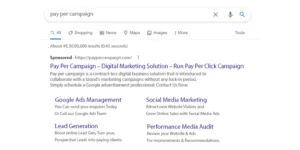Introduction
Video advertising has become a powerful tool for businesses to reach their audience and promote their products or services. Google Ads offers a robust platform for creating and managing video campaigns, allowing you to leverage YouTube’s vast audience. This step-by-step guide will help you craft successful Google Ads video campaigns that drive engagement and conversions.
Step 1: Set Clear Campaign Goals
Before you start creating your video campaign, it’s crucial to define clear objectives. Knowing what you want to achieve will guide your strategy and help you measure success.
Key Considerations:
- Brand Awareness: If your goal is to increase brand visibility, focus on reach and impressions.
- Lead Generation: For capturing leads, prioritize actions like sign-ups and inquiries.
- Sales: If driving sales is your goal, aim for clicks and conversions.
Step 2: Understand Your Target Audience
Knowing your audience is essential for creating relevant and engaging video content. Conduct thorough research to identify who your ideal customers are and what they want.
Key Considerations:
- Demographics: Determine the age, gender, location, and interests of your audience.
- Behavior: Understand their online behavior, including the platforms they use and the types of content they engage with.
- Pain Points: Identify their needs and challenges to create content that addresses these issues.
Step 3: Choose the Right Video Ad Format
Google Ads offers various video ad formats, each suited for different goals and audience engagement levels. Select the format that aligns with your campaign objectives.
Key Formats:
- TrueView In-Stream Ads: Skippable ads that play before, during, or after other videos. You only pay when viewers watch at least 30 seconds or interact with your ad.
- TrueView Discovery Ads: Ads that appear alongside YouTube search results or related videos. They are ideal for promoting content that people actively search for.
- Bumper Ads: Six-second non-skippable ads designed for broad reach and brand awareness.
- Non-Skippable In-Stream Ads: 15-second ads that must be watched before the main video content. Suitable for concise, impactful messages.
Step 4: Create Compelling Video Content
Your video content is the heart of your campaign. It must capture attention quickly and convey your message effectively.
Key Considerations:
- Hook: Capture the viewer’s attention within the first few seconds.
- Message: Clearly convey your main message or value proposition.
- Call to Action (CTA): Include a strong CTA that tells viewers what you want them to do next (e.g., visit your website, sign up, make a purchase).
- Quality: Ensure high production quality, including clear audio and visuals.
Step 5: Set Up Your Google Ads Video Campaign
Once your video content is ready, it’s time to set up your campaign in Google Ads.
Steps:
- Log in to Google Ads: Go to your Google Ads account and click on “Campaigns.”
- Create a New Campaign: Click the “+” button and select “New campaign.”
- Select Your Goal: Choose a campaign goal that matches your objectives (e.g., “Brand awareness and reach” or “Leads”).
- Choose Campaign Type: Select “Video” as your campaign type.
- Configure Campaign Settings: Set your budget, bidding strategy, and campaign dates. You can choose between “Standard” and “Accelerated” delivery methods.
- Define Targeting Options: Choose your audience demographics, interests, and keywords. You can also target specific placements on YouTube or the Google Display Network.
- Upload Your Video Ad: Upload your video to YouTube and enter the video URL in Google Ads.
Step 6: Optimize Your Campaign
To ensure your campaign performs well, continuously monitor and optimize it based on key performance metrics.
Key Considerations:
- Performance Metrics: Track metrics such as view rate, click-through rate (CTR), conversions, and cost per view (CPV).
- A/B Testing: Test different video creatives, headlines, and CTAs to see what resonates best with your audience.
- Adjust Targeting: Refine your audience targeting based on performance data. Exclude demographics or placements that aren’t delivering results.
- Budget Allocation: Allocate more budget to high-performing ads and reduce spend on underperforming ones.
Step 7: Analyse and Report
After your campaign has run for a sufficient period, analyse the results to understand its impact and gather insights for future campaigns.
Key Considerations:
- Comprehensive Reporting: Use Google Ads reporting tools to generate detailed reports on your campaign’s performance.
- ROI Calculation: Calculate your return on investment (ROI) by comparing the campaign’s cost to the revenue or leads generated.
- Learn and Improve: Use the insights gained to refine your future video campaigns. Identify what worked well and what can be improved.
Conclusion
Creating a successful Google Ads video campaign involves strategic planning, creative execution, and continuous optimization. By following this step-by-step guide, you can effectively reach your target audience, convey your message, and achieve your marketing goals. Stay updated with the latest trends and best practices in video advertising to keep your campaigns fresh and impactful in 2024 and beyond.
To know more about Google Ads, Please visit https://paypercampaign.com





